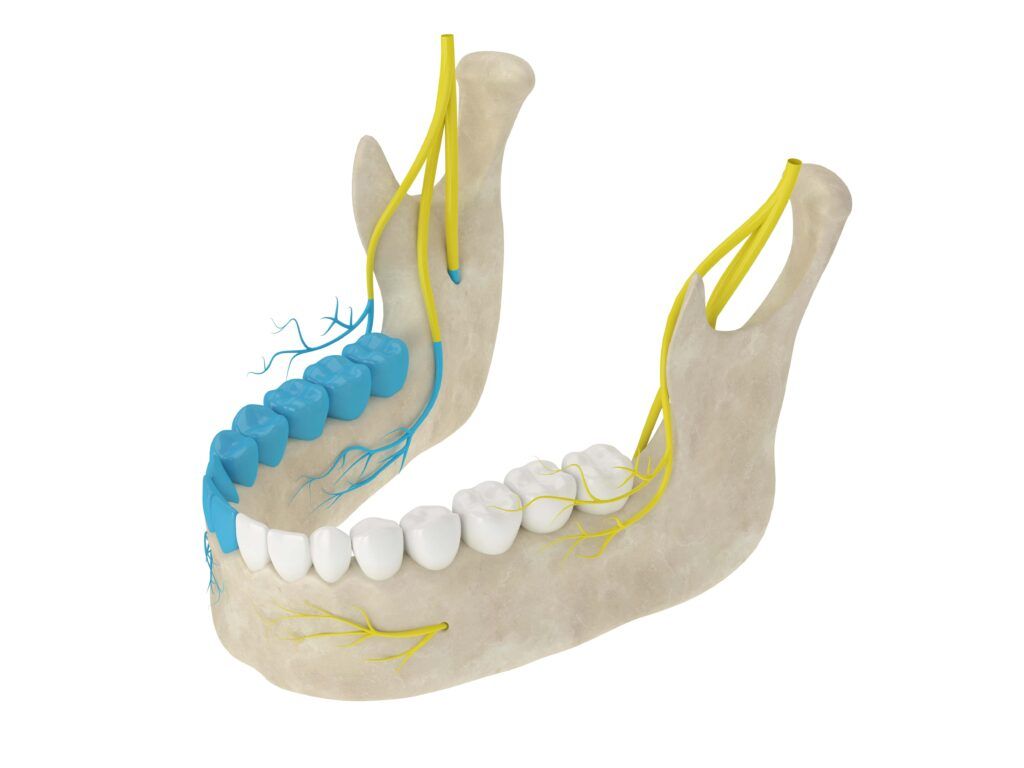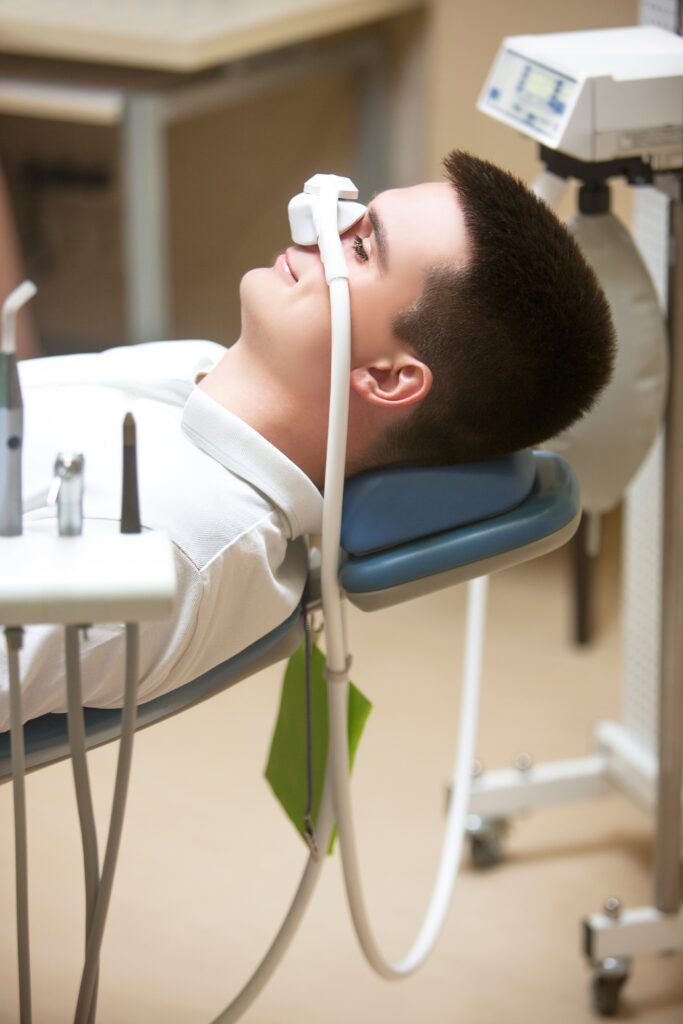Venturing into the dentist’s chair can be a nerve-wracking experience for many, but modern dentistry has made significant strides in ensuring patient comfort. A key aspect of this comfort is the use of dental anesthetics and sedation techniques. Understanding how these work can transform your perception of dental visits from daunting to manageable. In this blog, we’ll delve into the science behind dental anesthetics and sedation, exploring their types, how they function, and what patients can expect during their dental procedures. Whether you’re preparing for a routine check-up or a more complex dental surgery, gaining insight into these pain management methods will equip you with the knowledge and confidence for a more relaxed dental experience.
How Dental Anesthetics Work
Dental anesthetics are medications used to numb areas of the mouth during dental procedures, ensuring that patients experience minimal to no pain. They work by blocking the nerves in the mouth from sending pain signals to the brain. There are two main types of dental anesthetics: local and topical.

- Local Anesthetics: These are the most commonly used anesthetics in dentistry. They are injected into the gum or inner cheek to numb a specific area of the mouth. Local anesthetics work by blocking the nerve fibers in the area from transmitting pain signals to the brain. The effect is localized to the area where the anesthetic is administered, allowing the patient to remain fully conscious and aware during the procedure. The most commonly used local anesthetic in dentistry is lidocaine.
- Topical Anesthetics: These are applied directly to the surface of the gum or inner lining of the mouth. Topical anesthetics come in the form of gels, creams, sprays, or patches. They are used to numb the surface of the mucous membrane and are typically applied before injecting the local anesthetic to reduce the discomfort of the needle prick. They are also used for minor dental procedures like cleaning or treating small cavities.
Both types of anesthetics work by temporarily blocking the pathway of pain signals along the nerves. They achieve this by inhibiting the movement of sodium ions in and out of nerve cells. Normally, when a pain signal is generated, sodium ions flow into the nerve cell, creating an electrical signal that travels along the nerve to the brain. Anesthetics prevent this flow of sodium ions, thereby stopping the pain signal from reaching the brain.
Here’s a table showcasing different types of nerve blocks that dentists use, the areas they anesthetize, and their common uses:
| Nerve Block Type | Area Anesthetized | Common Uses |
| Inferior Alveolar Nerve Block | Lower teeth to the midline, lower lip, chin | Fillings, crowns, extractions in lower teeth |
| Maxillary Nerve Block | Upper teeth and upper lip | Procedures on upper teeth, sinus lifts |
| Mandibular Nerve Block | Lower jaw, except the lower front teeth | Full lower denture fittings, extensive surgery in lower jaw |
| Mental Nerve Block | Lower lip and chin area on the operated side | Biopsies, surgeries in the lower lip and chin area |
| Incisive Nerve Block | Anterior teeth and premolars in the lower jaw | Fillings, root canals in front lower teeth |
| Palatal Nerve Block | Soft tissue of the palate | Periodontal procedures, tooth extractions in upper jaw |
The effect of dental anesthetics is temporary, and normal sensation typically returns within a few hours after the procedure. Their use has greatly improved patient comfort in dentistry, allowing for pain-free procedures and reducing anxiety associated with dental treatments.
How Dental Sedation Works
Dental sedation refers to the use of medications to help patients relax and manage anxiety during dental procedures. It is particularly beneficial for individuals who experience dental anxiety, have a low pain threshold, or are undergoing lengthy or complex dental treatments. Dental sedation can range from mild to deep, depending on the patient’s needs and the nature of the procedure. Here’s how dental sedation works and the different types:
Nitrous Oxide (Laughing Gas):

Nitrous oxide sedation, often colloquially referred to as “laughing gas,” is a commonly used method to help patients relax and manage anxiety during dental procedures. It works by administering a mixture of nitrous oxide and oxygen through a mask placed over the patient’s nose. When inhaled, nitrous oxide induces a state of relaxation and euphoria while keeping the patient fully conscious and able to communicate. The gas has a rapid onset and offset, allowing for precise control of the sedation level throughout the procedure. Nitrous oxide is particularly advantageous as it provides a mild and adjustable level of sedation, making it suitable for routine dental cleanings, fillings, and other minor procedures. Its short duration of action allows patients to recover quickly and resume their normal activities after the procedure, making it a convenient and effective option for managing dental anxiety and discomfort.
Oral Sedatives:
Oral sedatives are medications taken orally, either in the form of a pill or liquid, to help patients relax and manage anxiety during dental procedures. These sedatives work by affecting the central nervous system, inducing a state of calmness and relaxation. The specific mechanism of action varies depending on the type of oral sedative prescribed, but they generally enhance the effects of a neurotransmitter called gamma-aminobutyric acid (GABA), which has inhibitory properties in the brain. By increasing GABA activity, oral sedatives reduce the brain’s response to stress and anxiety, allowing the patient to feel more at ease during the dental appointment. Oral sedatives are typically prescribed in advance of the procedure, and their level of sedation can range from mild to moderate, depending on the dosage and the individual’s response. They are often used for patients with mild to moderate dental anxiety and are suitable for a variety of dental treatments.
IV Sedation (Intravenous Sedation):
Intravenous (IV) sedation is a powerful method used in dentistry to induce a state of deep relaxation and alleviate anxiety during dental procedures. It involves the administration of sedative medications directly into a patient’s bloodstream via an intravenous line, typically in the arm or hand. IV sedation allows for precise control of the level of sedation, as the dosage can be adjusted as needed throughout the procedure. The medications used in IV sedation often belong to a class of drugs called benzodiazepines, which have a depressant effect on the central nervous system. They promote a sense of calmness, drowsiness, and, in some cases, amnesia, making patients less aware of the procedure. Although patients remain conscious and can respond to verbal cues, they often have limited memory of the dental work performed. IV sedation is particularly beneficial for patients with moderate to severe dental anxiety, extensive dental procedures, or those who prefer to have little to no recollection of their treatment. It requires careful monitoring by a trained dental professional to ensure the patient’s safety throughout the procedure.
General Anesthesia:
General anesthesia is a profound level of sedation used in dentistry for specific situations and complex procedures. Unlike other forms of sedation, it renders the patient completely unconscious and unaware during the dental treatment. It works by suppressing the central nervous system to the extent that the patient loses consciousness and all sensation, including pain perception. General anesthesia is typically administered through inhalation, where the patient breathes in anesthetic gases, or through intravenous (IV) injection. Dental procedures requiring general anesthesia are often extensive, such as complex oral surgeries or the removal of impacted wisdom teeth. Anesthesia providers, who are highly trained medical professionals, closely monitor the patient’s vital signs and ensure a safe and controlled environment throughout the procedure. General anesthesia allows for pain-free and anxiety-free dental treatments while keeping the patient completely unconscious during the process. Due to its profound effects and potential risks, it is reserved for specific cases and is administered in a hospital or surgical center setting with the utmost care and expertise.
The choice of dental sedation method depends on the patient’s level of anxiety, the type of procedure, and the dentist’s recommendation. Dental sedation helps patients feel more comfortable and less anxious during their dental visit, facilitating necessary treatments and improving overall oral health. It is administered and monitored by trained dental professionals to ensure the patient’s safety and well-being throughout the procedure.
Conclusion
In conclusion, dental anesthetics and sedation techniques have revolutionized the field of dentistry by significantly enhancing patient comfort and making dental procedures more accessible for individuals with dental anxiety or those requiring extensive treatments. Dental anesthetics, whether administered locally or topically, effectively block pain signals at the source, ensuring a pain-free experience during procedures. On the other hand, dental sedation offers a spectrum of relaxation, from mild to deep, through various methods, allowing patients to feel at ease and reducing anxiety. The choice of anesthetic or sedation method depends on the patient’s needs and the nature of the procedure. Ultimately, these techniques have transformed dental care, making it more patient-centered and conducive to maintaining optimal oral health. By understanding how dental anesthetics and sedation work, patients can approach their dental visits with confidence and peace of mind.

